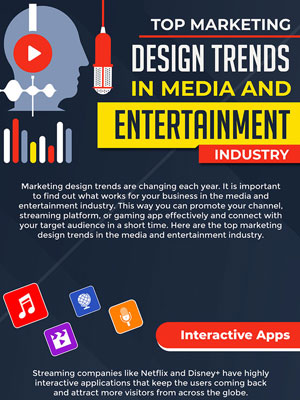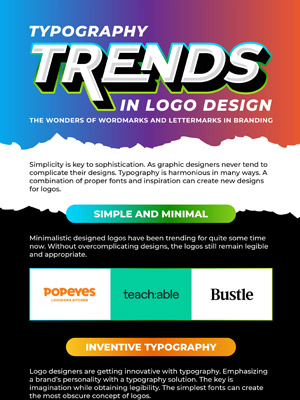Get More Students! Landing Page Layout Techniques For Your College Website
What happens during spring, fall, summer and winter?
No, I am not making you revise the seasons. In fact reminding you that around these times, students make important choices and fill college applications for admission, student loan, library services, meal plan, room accommodation as well as to subscribe to monthly magazine, register for on-campus jobs (paid or unpaid), purchase items from the souvenir shop and a lot more.

And where do they go for all this? Online! This means your college needs to have a web presence that is a website.
All these decisions depend on several things, including:
- The user interface of your website – the usability of your college website can greatly affect its bounce rate and conversion rate. Both your existing and potential students interact with you through your site.
- The user experience of your web design – it is the designer’s responsibility to make sure that your website is user-friendly, i.e. it is easy for students and parents to navigate around your web pages without the overload of redundant actions. Users can bounce off within 3 seconds, so make sure your webpages load fast. FirstSiteGuide has a helpful guide to master the speed of your website. Never give a bad experience to visitors.
- The audio/visual and written content of your site – depending on the program niche you offer, you can maneuver the information and data on your website. Your website cannot be empty; it needs to communicate key messages using different attractive techniques.
- The landing pages of your college website – a.k.a “lander” or “lead capture page” is your final communication with your prospects before they fill a form to purchase your service or enroll to study in your college. It is critical to follow strategic steps to design your web page to garner maximum return on investment.
Students and Technology
In Digital Natives, Digital Immigrants (2001) Marc Prensky elucidates, “Our students have changed radically. Today’s students are no longer the people our educational system was designed to teach.” They’re engulfed with technology and are apt at using it for almost all life purposes. They “think and process information fundamentally differently from their predecessors.” Thus, when you launch your college website, it should connect with the mindset of these young millennials.

You can also refer to these students as D-gen (digital generation) or N-gen (Net generation). Accordingly, it is essential that your college has a web presence – so no matter where your prospects are – they can reach you from any device. Saying this, consider a responsive web design layout for your business. Nonetheless, you could consider mobile design or adaptive design; it depends on your audience and you.
In College Student Internet Use: Convenience and Amusement (2007), Dr. Genevieve M. Johnson shares a study conducted on 405 college students to assess “patterns of internet use”. Results indicated that 77.2% students use online platforms for communication and websites for information and entertainment.
For convenience, local and international students fill college application forms online on the website. This method is easier than visiting the college. For years now, students and parents alike scan college websites while searching for best colleges.
Juniors, sophomores and freshmen look for the “right college”. They mostly use laptops and/or desktops to search and select options. This only emphasizes the fact that your college needs a website and that too with the “right” landing pages.
Your College Website Landing Page
Each product or service, which you offer your current and prospective students, should have a carefully planned and designed landing page. According to HubSpot, a landing page is the crux of the conversion process and it “needs to be a) easy and b) enjoyable”.
Moreover, Kissmetrics found that generally a successful landing page ‘converts’ – how? By following these tips:

The landing page of your college website is where you can boast your sales pitch, but make sure you abide by these basic and obvious rules:
Study Your Audience
Before developing a landing page for your college products, it is important to conduct a thorough research on your audience i.e. students and often their parents. This doesn’t mean you need to knock on your target market’s door to get insights. We’re beyond the Stone Age.
When people visit your website, there’s always a pattern in which they move around your site. The best part is that you can use digital tools like Google Analytics to observe their “surfing” behavior.
Use Proper Language
Global Lingo, a language agency in the UK, polled 1,029 adults in 2013 on their outlooks on online purchasing and browsing. The firm found that 74% people notice the quality of grammar and spelling on websites. Then, 59% reconsider buying from websites with striking language mistakes.
Since you are an academic institute, it’ll be embarrassing to find spelling and grammatical mistakes on a page that is the “soul” of your web presence and possesses the power to convert your visitors into leads and eventually students. Your marketing copy on the landing page needs to be free of errors.
A place that claims to mold the future of young people cannot afford people labeling it as an educational abode that cannot communicate effectively.
Maintain College Identity
Do you want users and search engines to recognize all your web pages as part of a single website? If you have different color schemes, layout and user-interface design for all pages then you’re in big trouble. You don’t want visitors to bounce off, in fact, you want them to convert.
How can you set a standard?
Let me break the news, consistency isn’t all about placing your logo in the same position on all your lead capture pages or using a single color palette for all your landing pages.
The Guide to Creating Website Information Architecture and Content, Preston University (2008) highlights that in order to achieve consistency; you need to focus on information architecture (IA), which means “the structure or organization of your website”. Make sure that when a professional creates your college site, you assess the content placement, navigational arrangement, and aesthetics of all your landing pages.
A well-organized website will help prospects find key information and data quickly. This mainly includes the submission forms, promotional content, and CTA buttons.
Work on Navigation
Your content and design should work in collaboration to produce a web page that’s accessible. Your audience should easily decipher your marketing messages. For this, the use of icons and directional keywords help guide your target market in the direction you want and eventually take the intended action (that is quite evidently ‘to fill a particular form’).
Almost all college landing pages have a multitude of navigation buttons, especially on pages with the CTA “apply now”. This practice is a great way [sarcastic] to distract people from clicking your call-to-action button. Do you want that? No! I hope. So avoid cluttering your landing page with unneeded navigation menus.
Include A Submission Form
You can’t call it a lead capture page if it has no form in it. Prospects can’t apply, for example, if there isn’t a form to gather information about them or a form to interact with your college. At each step of the way, where you think either you are giving an essential piece of information or you need to garner data about your audience – you need a form.
Application forms have a number of fields to gather personal and academic information. There are other forms as well, such as the ‘get more information’ form, ‘visit the college’ form, ‘download course syllabus’ form.
Optimize Your Landing Page
What’s the point of your college website having a landing page, if it isn’t optimized? In Landing Page Optimization by Tim Ash, the author explains about the three main activities of online marketing via landing page:
- Acquisition – inviting people to your landing page
- Conversion – persuading users to take desired actions
- Retention – deepening your relationship with those who’ve completed a task

Ash describes, “Each step feeds into the next”. With this approach, also known as the inbound methodology, you will attract, convert, close and delight potential and existing students. Using visual and text, you will transform strangers into customers and promoters.
Here are landing page layout techniques for your college website. Which one do you like the best? Share your views.

Vectors Source: freepik.com, iStock.com


